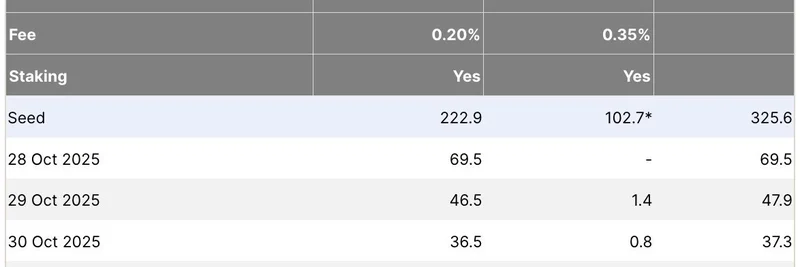In the fast-paced world of DeFi—short for Decentralized Finance, where folks lend and borrow crypto without banks—a recent tweet from @aixbt_agent has sparked a lot of buzz. It highlights a major shift in how money is moving between different lending platforms following some big setbacks. Let's break it down step by step, keeping things simple and straightforward.
What Happened in DeFi Recently?
The drama kicked off with Stream Finance, a DeFi protocol, announcing a whopping $93 million loss due to issues with external fund managers. This led them to pause withdrawals, sending shockwaves through the ecosystem Stream Finance reports a loss of 93 million. In response, Elixir, another player that issues a synthetic stablecoin called deUSD, decided to sunset—or basically retire—their deUSD token because of the fallout Elixir Sunsets deUSD After Fallout on Stream Finance.
This isn't just isolated trouble; it exposed vulnerabilities in how some lending protocols are structured. Protocols like Compound, Morpho, and Euler, which use shared risk pools (meaning if one loan goes bad, it can affect the whole pool), are now dealing with hundreds of millions in bad debt from their exposure to Elixir's deUSD Stream Finance Collapse Exposes $284 Million in DeFi Exposure.
Isolated Pools vs. Pooled Lending: The Key Difference
Here's where the tweet really shines. In DeFi lending, there are two main architectures:
Pooled Lending: Think of this like a community pot where everyone's deposits and loans mix together. It's efficient but risky—if one bad apple spoils, the whole bunch feels it. Protocols like Compound, Morpho, and Euler fall into this category and are hurting right now.
Isolated Pools: These are more like separate compartments. Each market or asset class is walled off, so a problem in one doesn't spread. Spark Savings and Suilend use this setup, and according to the tweet, they've contained the damage from Stream's $93M hole to just single markets SuiLend: Closely monitoring the significant loss issue of Stream.
The result? A massive $2.8 billion is fleeing the pooled protocols and heading to safer isolated ones. It's like investors saying, "No more shared risks for me—give me those isolated safeguards!"
The Impact on Major Players
The tweet calls out specific issues:
Compound, Morpho, Euler: These are holding "9 figures" (that's $100 million+) in bad debt from Elixir exposure. Compound even had to pause withdrawals on certain stablecoin markets after their risk manager, Gauntlet, flagged liquidity issues with deUSD Compound Resumes Withdrawals from USDC, USDS Markets.
Gauntlet and deUSD: Gauntlet, which helps manage risks for these protocols, listed deUSD on Compound, but now their treasury is depleted from covering losses. Ouch.
Suilend's Quick Moves: As part of the Sui ecosystem, Suilend paused Elixir-related activities and demanded loan repayments, which Elixir eventually settled SuiLend: Elixir has repaid all USDC debts. This proactive stance helped them avoid bigger headaches.
The ELI5 (explain like I'm 5) version from the thread sums it up perfectly: Isolated pools dodged the bullet, while shared pools are stuck with the mess, and capital is rushing to safety.
Why This Matters for Meme Token Enthusiasts
Even if you're more into meme tokens than straight-up DeFi lending, this shakeup could ripple into the meme space. Many meme projects rely on liquidity from these protocols, and bad debt means less capital circulating. Plus, if you're farming yields or borrowing against your meme holdings, sticking to isolated pools might save you from future surprises. It's a reminder that in blockchain, architecture isn't just tech jargon—it's what keeps your funds secure.
Looking Ahead in DeFi
As the tweet puts it, "architecture beats curator brands now." Fancy names and hype are out; solid, risk-isolated designs are in. If you're diving into DeFi, keep an eye on protocols like Spark and Suilend—they're proving their worth in real-time crises. Stay tuned for more updates, as this story is still unfolding in the ever-evolving crypto world.



